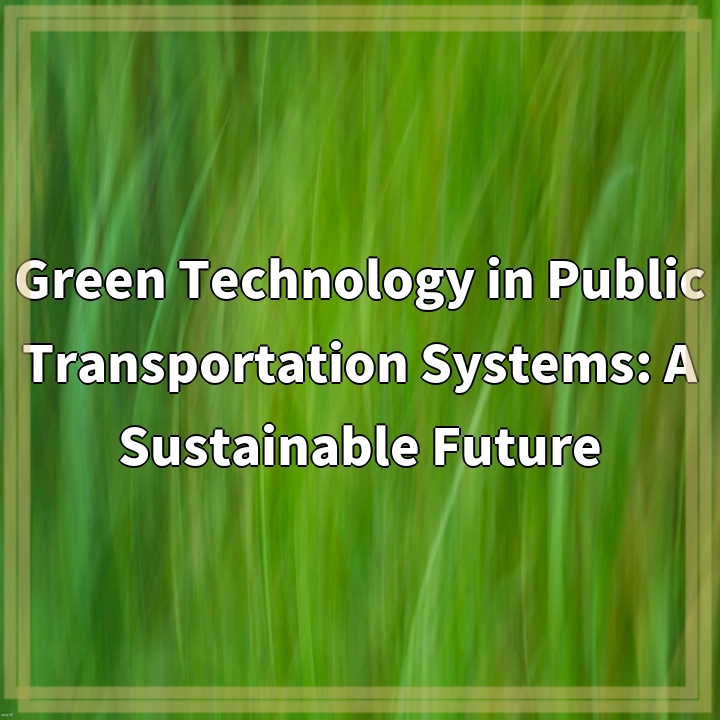
What is Green Technology in Public Transportation Systems?
Green technology in public transportation systems refers to the use of sustainable and environmentally friendly technologies in the design and operation of public transportation options. It involves the integration of various technologies and practices that aim to reduce the environmental impact of transportation while also providing efficient, safe, and accessible modes of travel.
Real-World Problems Associated with Green Technology in Public Transportation Systems
1. Cost
Implementing green technology in public transportation systems often comes with high initial costs. The adoption of electric buses or the construction of infrastructure to support clean energy sources, such as charging stations, can require significant investments. Limited funding and budget constraints can pose challenges to the widespread adoption of green technology in transportation.
2. Infrastructure and Compatibility
One of the major hurdles in transitioning to green technology in public transportation is the need for compatible infrastructure. Electric buses, for example, require an extensive network of charging stations in order to operate effectively. Retrofitting existing infrastructure or building new facilities can be logistically and financially demanding.
3. Range and Charging Time
Although electric buses and other electric vehicles (EVs) offer numerous environmental benefits, they still face limitations in terms of range and charging time. EVs often have shorter ranges compared to traditional combustion engine vehicles, and the time required to recharge them can be longer than refueling with fossil fuels. These factors can impact the efficiency and effectiveness of public transportation systems.
4. Public Acceptance and Perception
Adopting green technology in public transportation also requires public acceptance and support. Some individuals may have concerns about the reliability, comfort, or convenience of newer technologies. Educating the public about the benefits and addressing misconceptions is essential for widespread adoption of green transportation options.
5. Integration and System Compatibility
Integrating green technology into existing transportation systems can be complex. Coordinating seamless operations between different modes of transportation, such as buses, trains, and electric taxis, requires careful planning and system compatibility. Ensuring smooth transfers and efficient interconnectivity is crucial to encourage public use and maximize the benefits of green transportation systems.

Solutions to Real-World Problems Associated with Green Technology in Public Transportation Systems
1. Financing and Funding
Efforts to implement green technology in public transportation can be supported through various financing mechanisms, such as government grants, subsidies, and public-private partnerships. Collaborations between transportation agencies, businesses, and stakeholders can also help secure funding for sustainable transportation initiatives.
2. Infrastructure Development
Investments in charging infrastructure and other necessary facilities should be prioritized to support the expansion of electric buses and other green transportation systems. Governments and transportation agencies can work together to identify suitable locations for charging stations and assess the feasibility of integrating renewable energy sources into the grid.
3. Technological Advancements
Ongoing research and development in green technology can help overcome existing limitations, such as enhancing battery technology to improve electric vehicle ranges and reducing charging time. Innovation in hydrogen fuel cell technology and autonomous vehicles also hold promise for sustainable public transportation solutions.
4. Communication and Education
Efforts to increase public acceptance and perception of green transportation can be achieved through effective communication and education. Raising awareness about the environmental benefits, cost savings, and overall improvements in the quality of public transportation can help change public attitudes and encourage broader adoption of green technology.
5. Integrated Transportation Planning
Coordinated transportation planning that considers the integration of different modes of transportation is essential to create seamless and efficient connections within public transportation systems. This involves designing routes, schedules, and infrastructure to optimize transfers and provide convenient options for commuters, reducing reliance on private vehicles.















